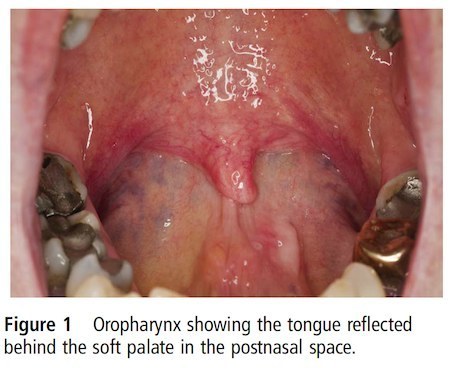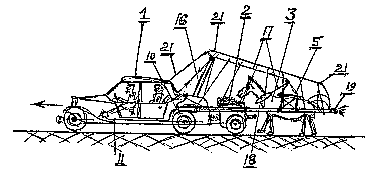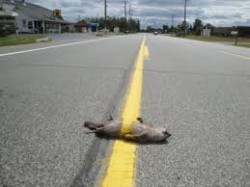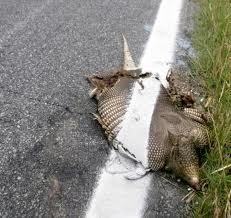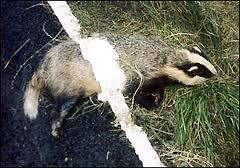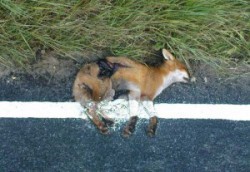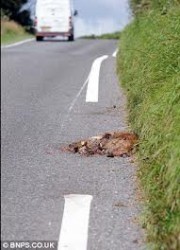Marc Abrahams's Blog, page 513
February 24, 2013
Ig Nobel tour of Scandinavia 2013 — Schedule
Come see us on the Ig Nobel Tour of Scandinavia 2013:
March 4-7, 2013
DENMARK — with shows in:
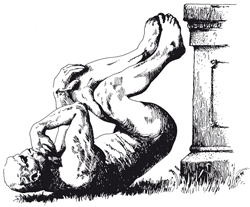 AARHUS: Monday and Tuesday, March 4 and 5 — University of Aarhus (2 shows), 7:00 PM. —
TICKETS
— (and meetup info, in case you want to meet up before the show with some interesting persons)
AARHUS: Monday and Tuesday, March 4 and 5 — University of Aarhus (2 shows), 7:00 PM. —
TICKETS
— (and meetup info, in case you want to meet up before the show with some interesting persons)ODENSE: Wednesday, March 6 — University of Southern Denmark , 7:00 pm, Odense Campus, SDU (U47), Campusvej 55, Indgang C, 5230 Odense M. — [ TICKETS ] — [MAP]
COPENHAGEN: Thursday, March 7 — Geological Museum, Natural History Museum of Denmark, University of Copenhagen, 6:30 pm. — [ TICKETS ] — [MAP]
Every show in Denmark features:
Marc Abrahams
Chris McManus, Ig Nobel Prize winner (Scrotal asymmetry in man and ancient sculpture)
Johan Pettersson, Ig Nobel Prize winner (Solution to the mystery of why certain Swedish citizens found that their hair had turned green)
Wolter Seuntjens (A scientific investigation: Do people blush in the dark?
Organizer: Jens Holbech.
Sponsored by Carlsbergs Mindelegat. [TWITTER: #IgNobel]
March 11, 2013, Monday, 5:30 pm
SWEDEN: The Karolinska Institute, Stockholm — Featuring:
 Marc Abrahams
Marc AbrahamsChris McManus, Ig Nobel Prize winner (Scrotal asymmetry in man and ancient sculpture)
Kees Moeliker, Ig Nobel Prize winner (Homosexual necrophilia in the mallard duck)
Johan Pettersson, Ig Nobel Prize winner (solution to the mystery of why certain Swedish citizens found that their hair had turned green)
Organizer: Gustav Nilsonne. [Take a look back at last year's event.]
[TWITTER: #IgNobel]
And immediately after that, come see others of us on the Ig Nobel Tour of the UK.

Fly flee? No, Fly medicate, parentally.
Flies, parasites, parent-child relations, and fly-administered drugs all figure into this study:
“Fruit Flies Medicate Offspring After Seeing Parasites,” Balin Z. Kacsoh, Zachary R. Lynch, Nathan T. Mortimer, Todd A. Schlenke, Science, vol. 339, no. 6122, February 22, 2013, pp. 947-950. The authors, at Emory University, Atlanta, Georgia, explain:
“Here we describe a behavioral immune response that Drosophila melanogaster uses against endoparasitoid wasps. We found that when flies see wasps, they switch to laying eggs in alcohol-laden food sources that protect hatched larvae from infection. This change in oviposition behavior, mediated by neuropeptide F, is retained long after wasps are removed. Flies respond to diverse female larval endoparasitoids but not to males or pupal endoparasitoids, showing that they maintain specific wasp search images. Furthermore, the response evolved multiple times across the genus Drosophila. Our data reveal a behavioral immune response based on anticipatory medication of offspring and outline a nonassociative memory paradigm based on innate parasite recognition by the host.”
(Thanks to investigator Erno Charles for bringing this to our attention.)

Report of a lady who used her tongue to good medical effect
A new medical report suggests this limerick:
A lady, by using her tongue,
Distinguished (herself!) from among
The medical range
Of things that are strange,
Swollen, or sunken, or hung.
The report is:
“Using the tongue to palpate a lesion in the postnasal space: a unique case of self-diagnosis,” Nora Haloob, Robert Nash, BMJ Case Reports, 2013. The authors, at Lister Hospital, Stevenage, and at the Royal National Throat Nose and Ear Hospital, London, UK, write:
“This 64-year-old lady presented to ear, nose and throat department with a history of left-sided nasal blockage and a lesion in her postnasal space which was palpable by her tongue. In figure 1, the patient demonstrates how she was able to self-diagnose the cause of her symptoms, and therefore prompting a general practitioner referral, by manoeuvring the tip of her tongue to fit into the postnasal space…. Clinicians should never underestimate the value of a patient’s input in formulating a diagnosis.”
Detail from the report:

February 23, 2013
The many patents of Pedrick the great
Arthur Pedrick patented many odd devices, one of which puts a cart before a horse, the horse supplying the propulsive power:
The Patently Absurd web site collected many of Pedrick’s patents in one handy place.

Marketing consultant’s study pleases his horse-promotion client
The German Equestrian Federation [Fédération Equestre Nationale, also known as "FN"], announces that it commissioned a study from a marketing consultant — as to whether horseriding promotes character development (in people). The FN indicates that it is pleased with the results. Here is a rough, machine-produced translation of the announcement:
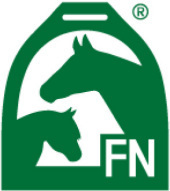
The logo of Fédération Equestre Nationale. The organization is also known as “FN”. The logo includes silhouettes of horses, and also includes the letters “FN”.
Riding promotes character development
FN new trial
Warendorf (fn-press). Riders are determined, enthusiastic, structured and balanced. And a much greater extent than people with other hobbies. This is the result of a recent representative study, in which the personality of 813 riders and non-riders were investigated.
Riding shape their character. Most riders are now nodding his head vigorously. But what is the “horse people” known, can now prove it. In August 2012 the German Equestrian Federation (FN) did a study on the effects of years of dealing with horses to investigate the formation of character….
Prior to the study, the Cologne business psychological consulting firm had performed transform led by psychologist Barbara Grohsgart conducted six focus groups with parents of riders and riding children.The results were used as hypotheses in the subsequent representative study.
(Thanks to investigator Hans Fried for bringing this to our attention.)

February 22, 2013
Let Us Analyze Famous Drips
 The drips of painter Jackson Pollock, famed in the art word for his characteristic manner of dripping paint, lend themselves to analysis by physicists. One such analysis is:
The drips of painter Jackson Pollock, famed in the art word for his characteristic manner of dripping paint, lend themselves to analysis by physicists. One such analysis is:
“What It Says on the Tin: A Preliminary Study of the Set of Paint Cans and the Floor in the Pollock-Krasner Studio,” Nicholas Eastaugh and Bhavini Gorsia, in Pollock Matters, Ellen G. Landau and Claude Cernuschi, eds. McMullen Museum, August 2007.

February 21, 2013
Dr. Altschuler on … Whole Body Discrepancies
Complementing Improbable’s recent note about Dr. Altschuler’s writings on famous character’s ailments, we move now to his work with Whole Body Discrepancies.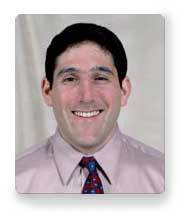 Eric Altschuler, M.D., Ph.D., who is currently Associate Professor of Physical Medicine and Rehabilitation, New Jersey Medical School and Associate Professor of Microbiology & Molecular Genetics, New Jersey Medical School, has devised (along with professor Vilayanur S Ramachandran) what they call
Eric Altschuler, M.D., Ph.D., who is currently Associate Professor of Physical Medicine and Rehabilitation, New Jersey Medical School and Associate Professor of Microbiology & Molecular Genetics, New Jersey Medical School, has devised (along with professor Vilayanur S Ramachandran) what they call
A simple method to stand outside oneself, Perception, 2007, volume 36, pages 632 – 634. A cunning arrangement of large mirrors can, it seems, induce peculiar sensations in perfectly normal observers. The professors describe their experiences on viewing reflections of their multi-mirrored selves -
“Upon stroking our faces with our index fingers while watching this view both of us obtained an `eerie’ feeling that we were touching not ourselves but some kind of `alien’ or android in a body outside (but similar) to our own. When we asked ten colleagues to perform the same procedure all noted that looking at this view also evoked the feeling that it was not their own cheeks being stroked, and that they were able to stand outside their bodies and observe themselves. A couple of people noted that they wanted to say “hello” or meet the individual whose cheek was being stroked. One person, who happened to be chewing gum, noted that the third image was chewing, but didn’t seem to be tasting anything.“
This completes our brief look at some of the work of Dr. Altschuler, but readers who wish to go further can find a partial listing of his academic output here. Including (but by no means limited to) -
• Neural correlates of the Pythagorean ratio rules
• Ramazzini and writer’s cramp
• AUTHORSHIP CLUES IN Henry VI, Part 3
and
• Why the 3D Writhe of Ideal Knots and Links Is Quantized and Additive

Involuntary Hippophagia (6): Horsemeat in the Pangolin
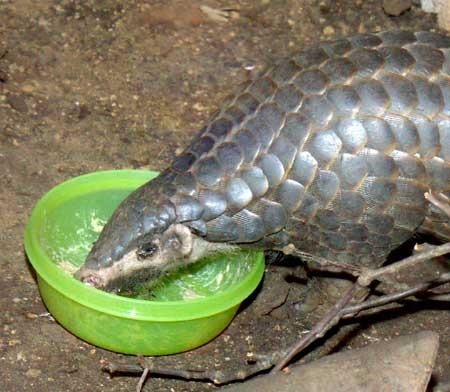 The diet of the pangolin normally revolves around ants, termites and other insects. But when panglolins are captured and kept in zoos, their keepers often try (with varying degrees of success) to tempt them with other foodstuffs.
The diet of the pangolin normally revolves around ants, termites and other insects. But when panglolins are captured and kept in zoos, their keepers often try (with varying degrees of success) to tempt them with other foodstuffs.
Across the world, zoos have tried such delicacies as : raw egg, porridge, boiled cockroaches, and apples. And at least two zoos (Oklahoma City Zoo and Basle Zoo) have tried horsemeat. Thus it seems almost certain [1] that, along with some humans, various pangolins have also been exposed to Involuntary Hippophagia (the unintended ingestion of a horse, or part thereof).
Source, see: ‘History and dietary husbandry of pangolins in captivity’ (Zoo Biology, Volume 26, Issue 3, pages 223–230, May/June 2007)
Notes:
[1] Improbable is confident that pangolins are extremely unlikely to have eaten horse in the wild – thus the hippophagia is involuntary.
[2] Improbable also has reason to believe that captive Aardvarks too have been subjected to Involuntary Hippophagia. “The meat portion of the mixture may be ground, chopped or mixed horsemeat, dry dog food or processed feline food (eg Nebraska Brand Feline Food is used at Pittsburgh, Zu/Preem Feline Diet at San Antonio) “ See: ‘A review of the management of the Aardvark: in captivity’, Corey A. Goldman, International Zoo Yearbook, Special Issue: Including volume 25 Volume 24, Issue 1, pages 286–294, January 1986.
[3] The photo shows a Chinese Pangolin at Leipzig Zoo snacking on something that may or may not contain some/none of the ingredients listed above. (courtesy: Nachbarnebenan at Wikipedia)

Road-line-painting Machines and Road Kills
Behold a common but seldom-mentioned form of historic preservation: animal carcasses painted-over on roadways.
Cars on highways collide with and kill millions of animals, all over the world (though in Antarctica it happens rarely). Small animals, especially birds, can go unnoticed as they lie beside a road, in the forest or on the hard shoulder. But larger animals, especially mammals, can remain (in the form of “remains”) on the road for some time. They will be crushed by the tires of the passing cars and turned into “road pizzas” before they, eventually, disappear.
In some countries dead animals can face a commemorative fate: falling ‘prey’ to the road liners — the machines that pain a stripe down the middle of a road. The road kills become part of the process, part of the road, and a visible part of the history of that road. In the USA, raccoons, skunks, opossums and armadillos fall prey to the road liners, in Europe it’s more badgers, foxes and hedgehogs. Australia has its own distinctive set of commemorated animals. Let the photos speak for themselves. (For more photos of painted roadkills, see my blog.)
Sometime, the road liners, confronted with a dead mammal, stop the machine and proceed after passing the corpse. This will give the road user a totally other view, as in the picture below.

Easily Misinterpreted Title of the Week: Life Management
This week’s Easily Misinterpreted Title of the Week is “Centre for Power Transformer Monitoring, Diagnostics and Life Management“.
The title has little to do with the Personal Growth or Life Management industries per se. Rather, it’s all about electrical power transformers, and extending the longevity thereof, in Australia:
The Centre for Power Transformer Monitoring, Diagnostics and Life Management (CPTM) has been established under the Science, Technology and Innovation (STI) initiative of the Government of Victoria….
The primary objectives of the Centre are to develop new technologies, computer algorithms and equipment for monitoring, diagnostics and life management of power transformers. Other activities of the Centre include studies into vegetable oil for power transformers, winding looseness detection, thermal and moisture modelling of transformers, and providing training and consulting services to the industry.
BONUS: For a gripping read on the subject, download the document called “The ‘Impossible’ Research Transformer”
BONUS TO THAT BONUS: Amuse yourself by estimating how many different electrical transformers were involved, fleetingly, in the computational process that delivered that downloaded document to you.

Marc Abrahams's Blog
- Marc Abrahams's profile
- 14 followers


